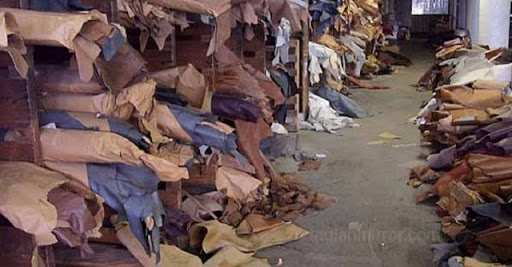Leather sector poised to boost production, earnings
The country’s leather sector is poised for increased production capacity and export earnings under the “Zimbabwe Leather Collective”, a recently launched marketing approach that brings together key producers in coordinated production and supply of leather products for domestic and international markets.
Zimbabwe has a competitive advantage on the leather value chain given its viable livestock base, but had lost the grip in recent years, as established manufacturing companies collapsed in the face of a myriad of adverse macro-economic reasons.
The resilient few companies in the sector and scores of skilled workers who had lost jobs when their firms closed shop, have been keeping the leather industry alive, with more producers and greater potential now anchored under the micro-small to medium enterprises (MSMEs).
The launch of the Tanners, Footwear and Leather Manufacturers Association of Zimbabwe (TAFLAZ) in 2019, marked a turning point in revitalising the value chain consciousness and positioning the sector through active representation.
However, operational costs, logistical gaps and limitations in product marketing have made the going tough for most players at individual level, which has necessitated the need for a collective approach in harnessing target market opportunities in a win-win manner.
This has prompted the recent launch of the Zimbabwe Leather Collective (ZLC), which seeks to assist the industry in enhancing output capacity and mitigating marketing costs through sharing of expenses, said Arnold Britten, a manager at Bulawayo-based Zambezi Tanners, who is one of the pioneers of the initiative.
“We have agreed to collaborate as tanners and leather manufacturers in the broader value chain. We recently started this as a pilot project involving a number of companies to try and meet market needs and we have come up with a catalogue of products and will be riding on digital platforms,” he said in interview.
“The Zimbabwe Leather Collective is a partnership between ZimTrade and TAFLAZ, seeking to create a marketing medium to promote and grow exports of Zimbabwean leather and leather products.
“The concept seeks to partner local tanneries with local manufacturers in the production of both domestic and exotic leather products. The leather products are then promoted under the ZLC banner, which carries the cost of promotion and marketing.”
Under this model, Mr Britten said the ZLC has adopted a digital marketing strategy and has already set up a website and social media presence to promote awareness of the local products to domestic and international buyers. The model is expected to benefit participating companies that include Millennium Footwear, Zambezi Tanners, Sagewood Inc, Bookset Leather Works, Safari Leather, Kara Sons and Good Hope Leather.
Through the use of social media influencers and special manufacturer features, the collective approach expects to increase individual brand awareness for members and counter the effects of the Covid-19 lockdown, which has crippled traditional trade fair models and limited physical contact.
“The ZLC website and digital marketing strategy have been successfully launched. ZimTrade generously sponsored the cost of the website and sponsored the attendance of ZLC participants to Gifts and Lifestyle Middle-East Dubai 2021, and Fashion Access at the APLF in Hong Kong 2021,” said Britten.
“These are exciting developments as we test the concept going forwards and look forward to the doors it will open for the industry.”
The collective has already created its first-look on hard copy products catalogue, which was seen by Business Chronicle, and is also available on soft copy.
“We are now in the process of preparing the 2021 catalogues, which will fall into four categories — exotics, footwear, outdoor and camping. Products must meet an acceptable quality standard, to ensure we maintain a good representation of Zimbabwean leather sector,” said Bitten.
ZimTrade chief executive officer, Mr Allan Majuru, confirmed the trade agency was working closely with the collective to improve coordination among sector players, which will improve the competitiveness of the entire sector.
“We are expecting that our interventions on capacity building and export promotion will be improved as companies in the sector will be organised. As a collective, sharing notes and best practices will be improved and we are expecting that this will improve the quality of leather and leather products that the country is going to export,” he said.
“There is huge potential that remains untapped in the leather sector. One of the reasons affecting producers has been that the industry was fragmented, with little co-ordination among players across the value chain. So, the collective is one major step that we are excited to work with, particularly on increasing exports from the entire sector.”
The revitalisation of the leather value chain ties closely with the Zimbabwe Leather Sector Strategy (2021-2030), which sets out priority programmes and reforms to be implemented over the next 10 years. According to Industry and Commerce Minister, Dr Sekai Nzenza, such programmes and policies reflect the concerns of stakeholders in the leather industry and are anchored under the country’s vision of achieving an upper middle-class status economy by 2030.
“The Leather Sector Strategy is framed against a backdrop of creation of value by unlocking wealth for the players at each of the nodes, such as farmers, traders, merchants, suppliers, abattoirs, tanners, small scale and large-scale manufacturers and retailers,” said the Minister.-herald.l.zw










